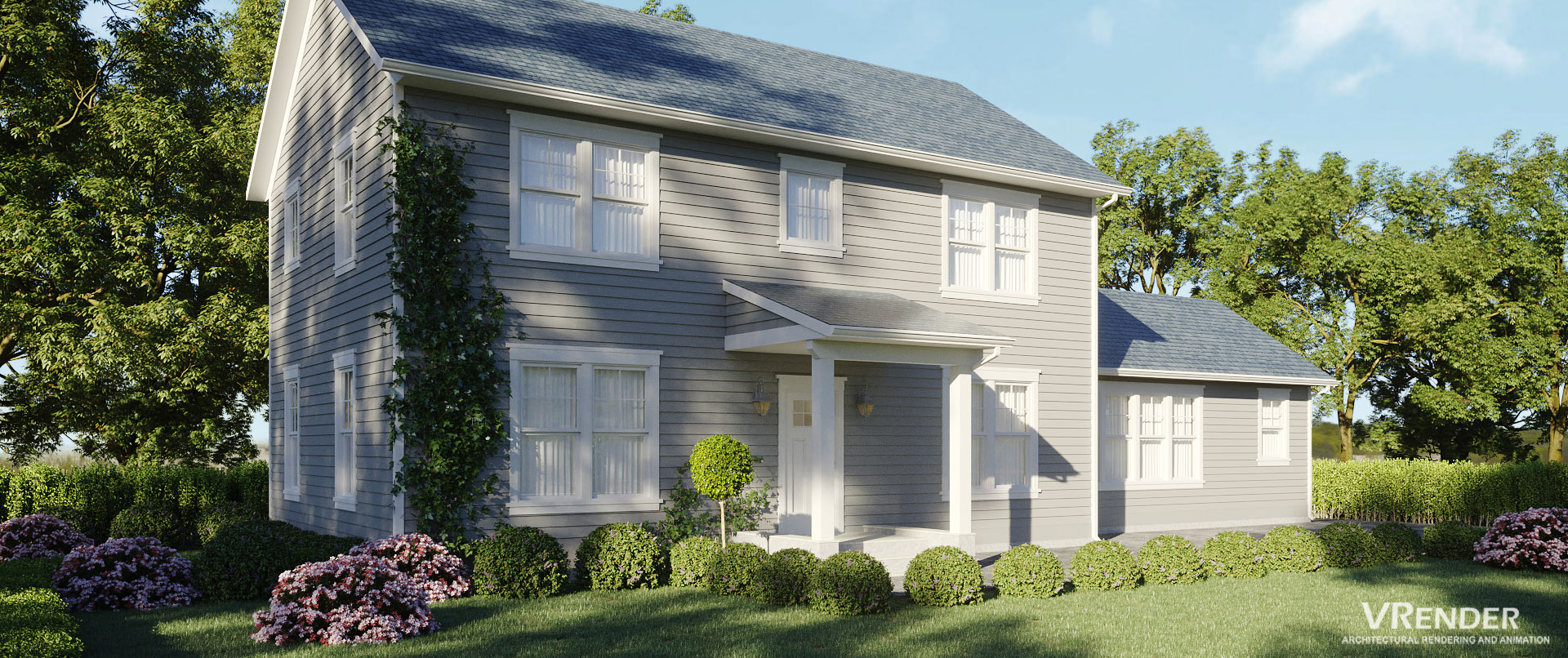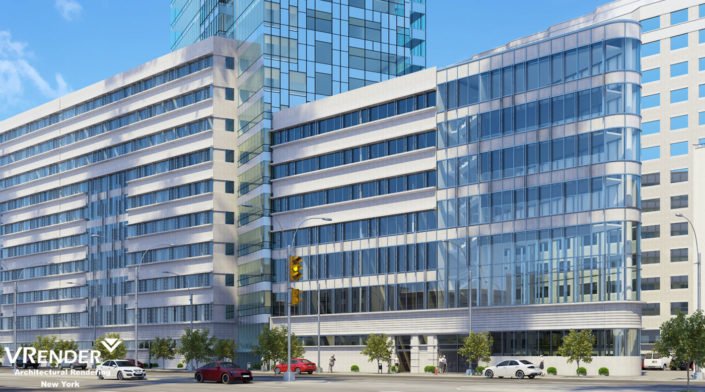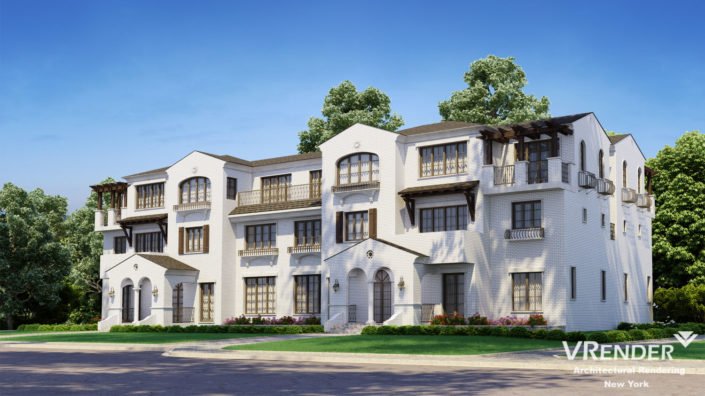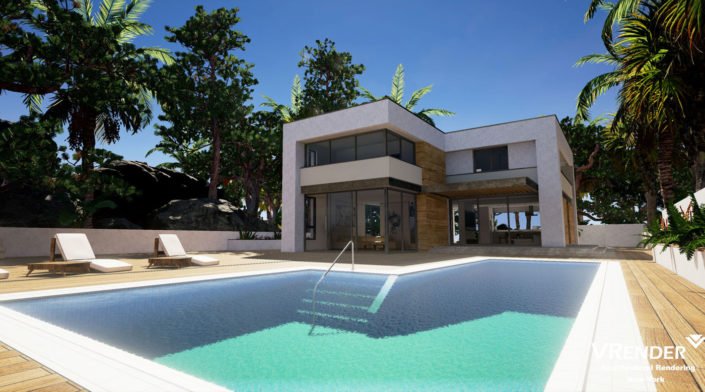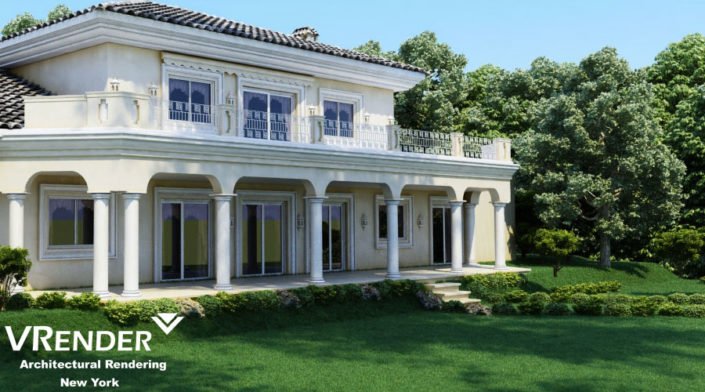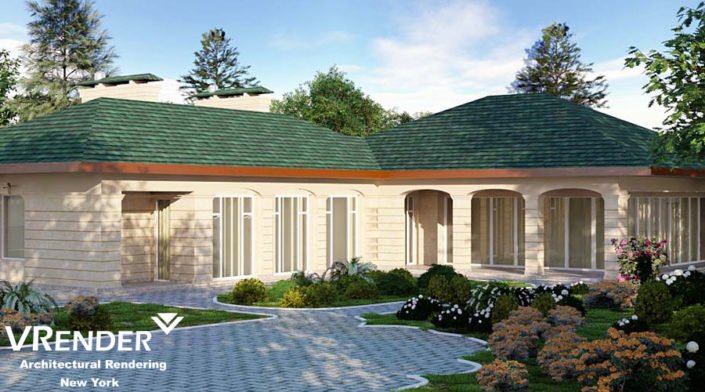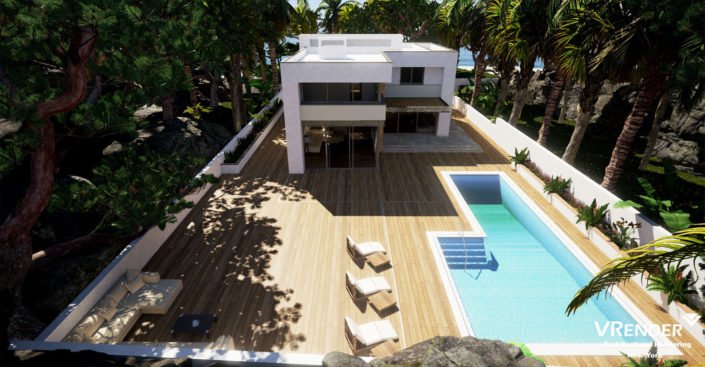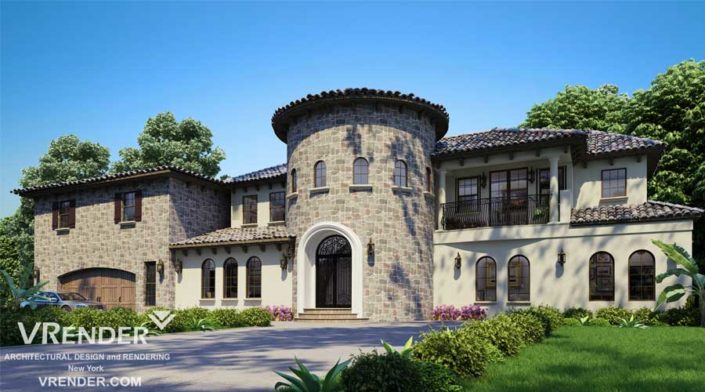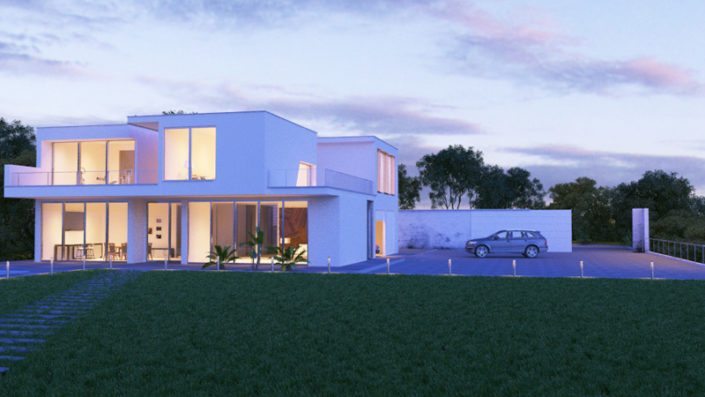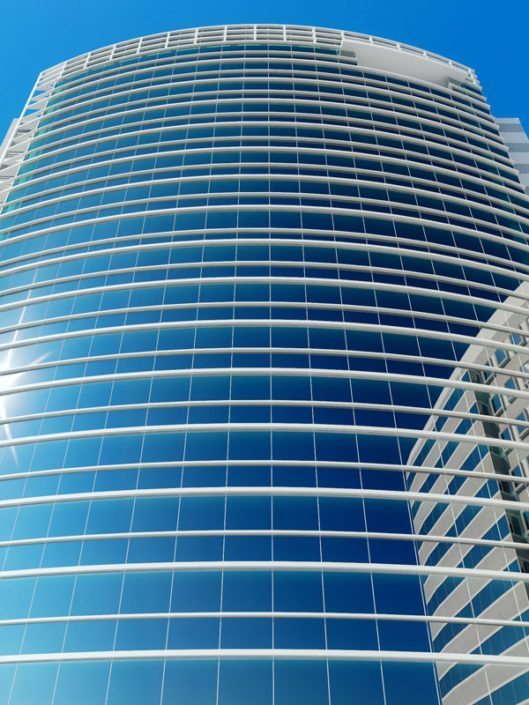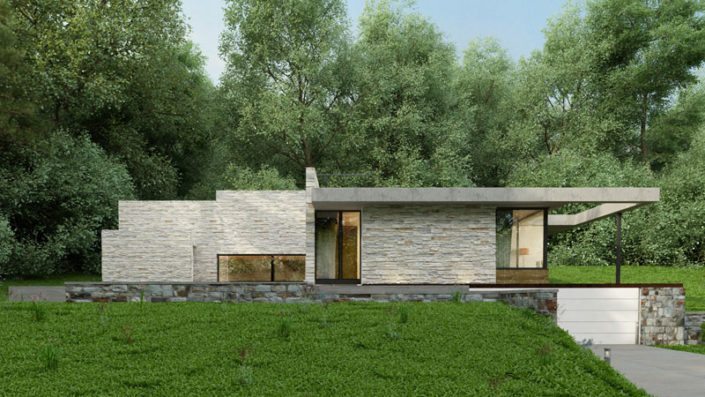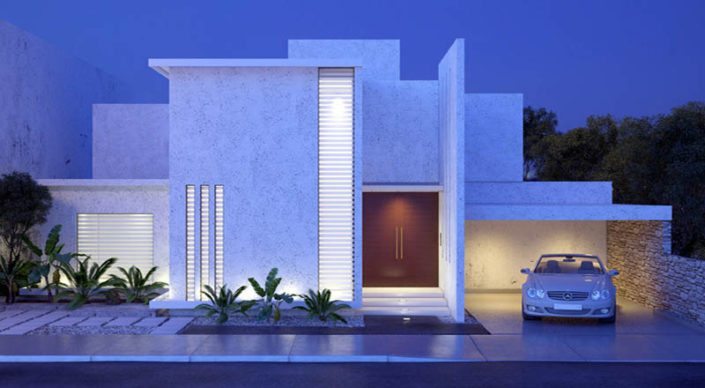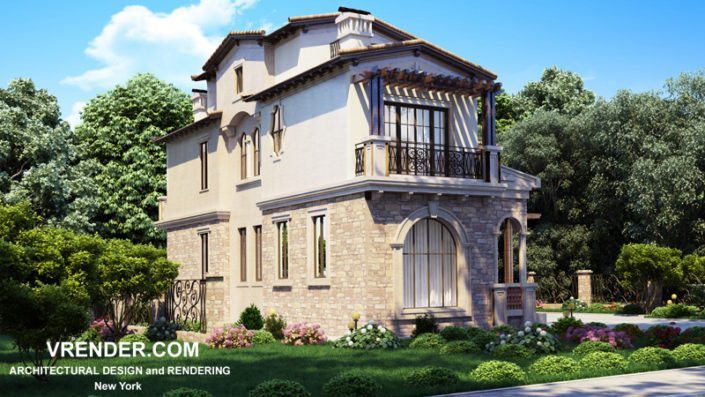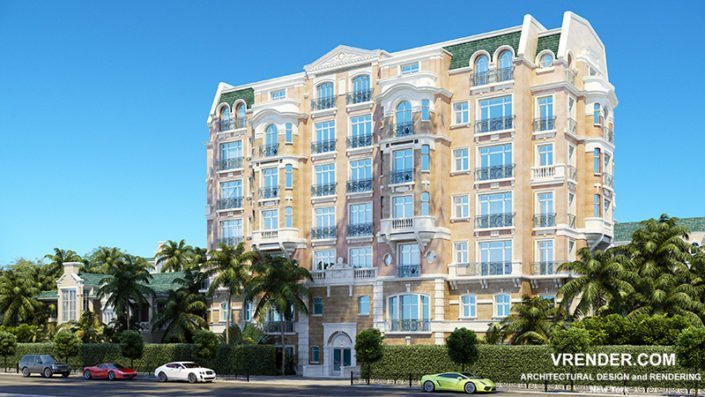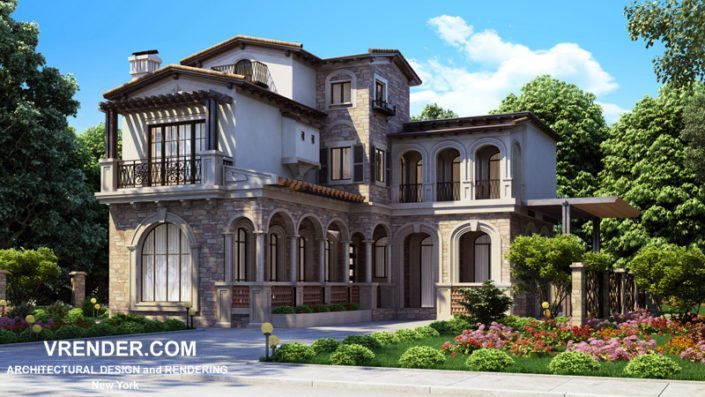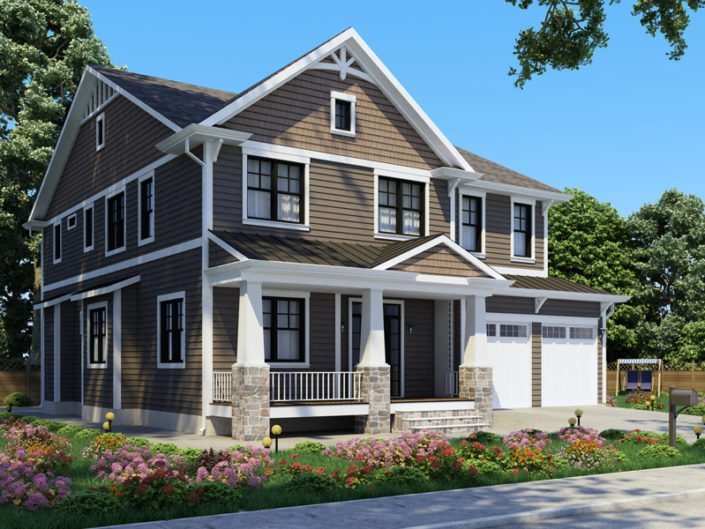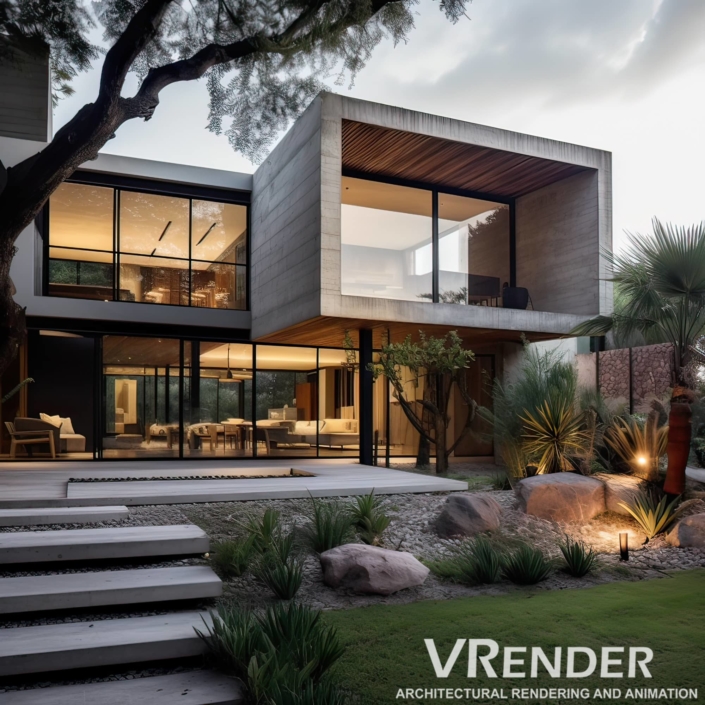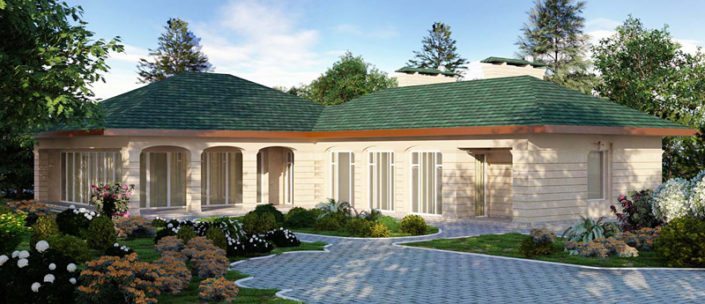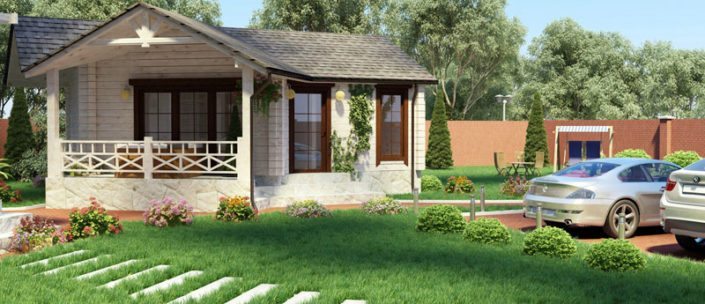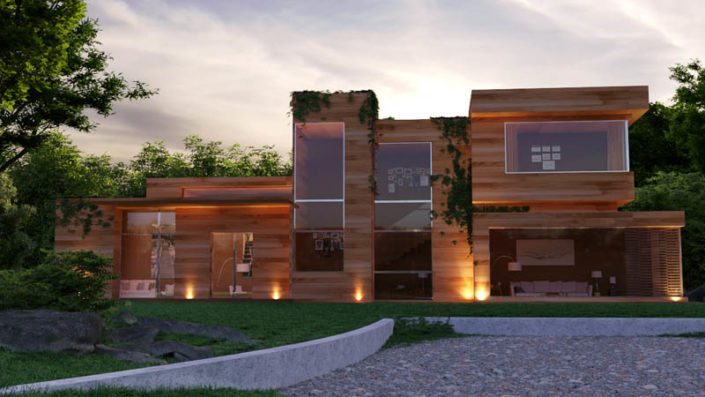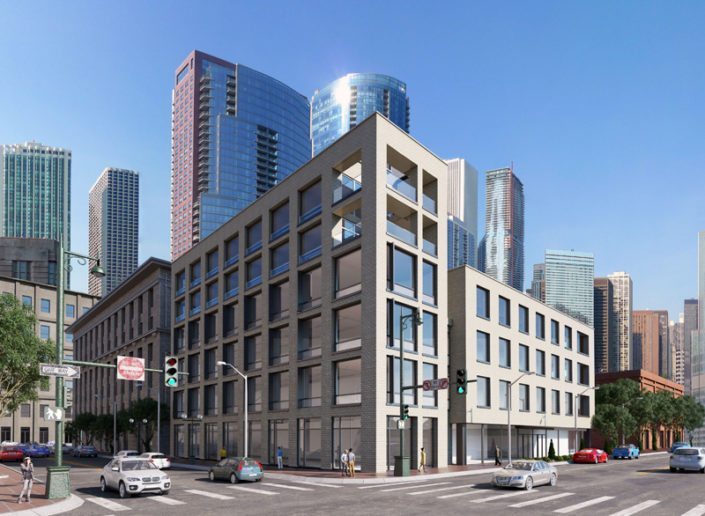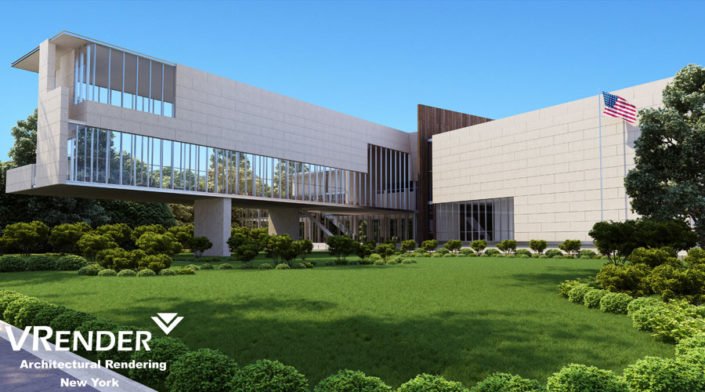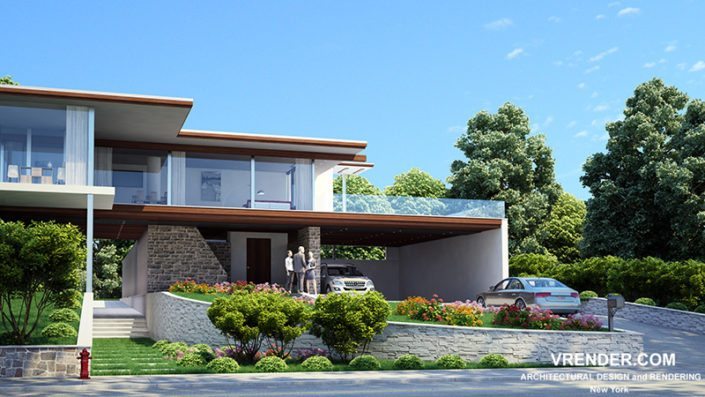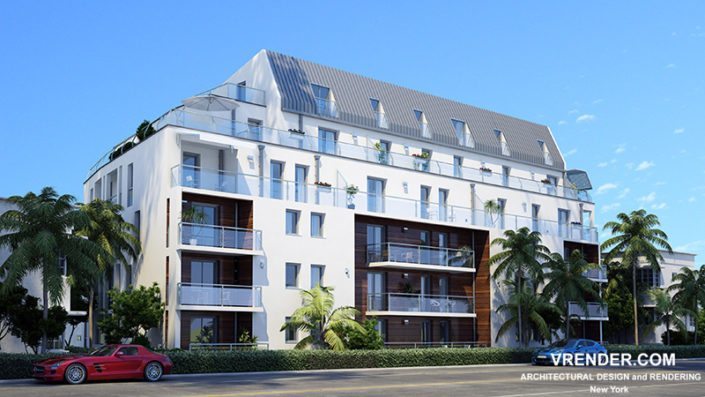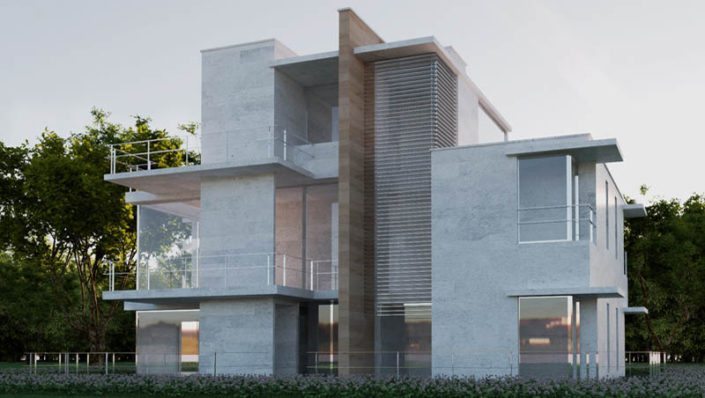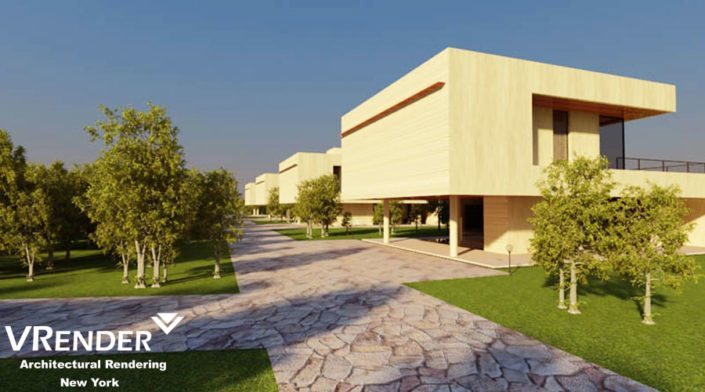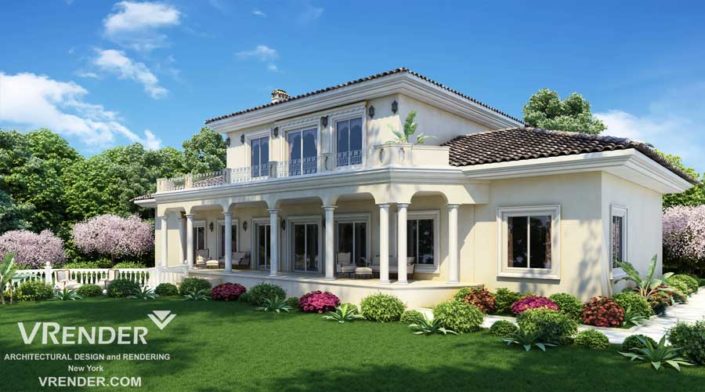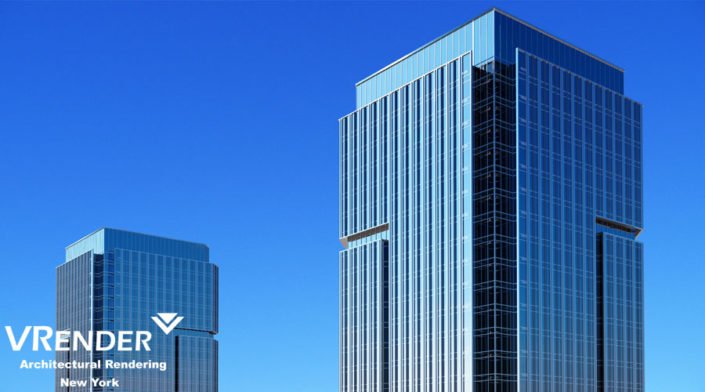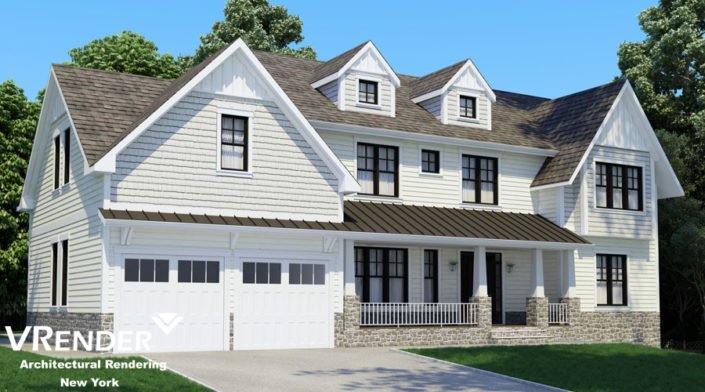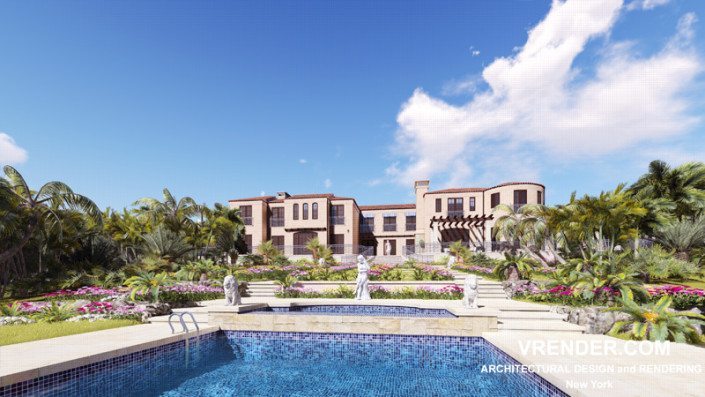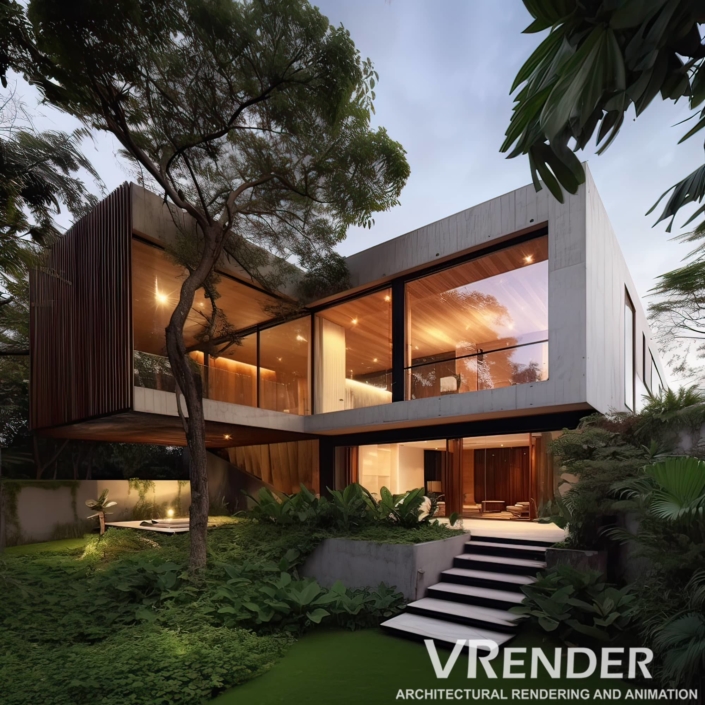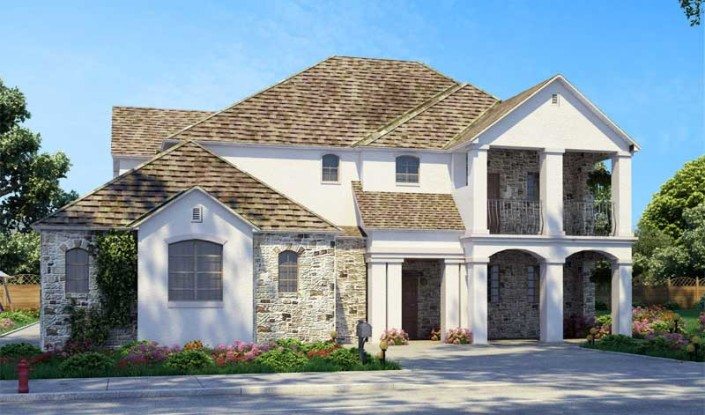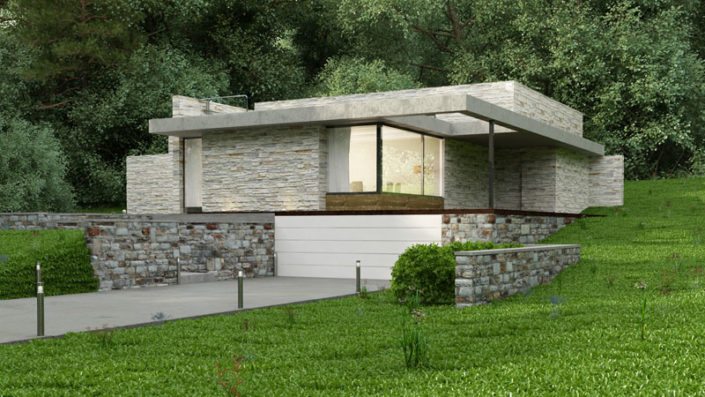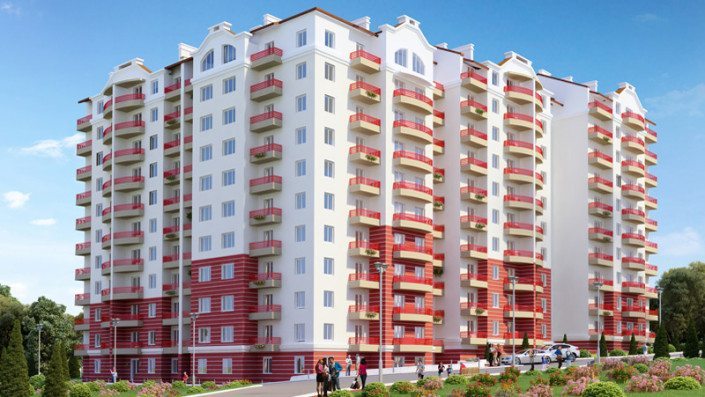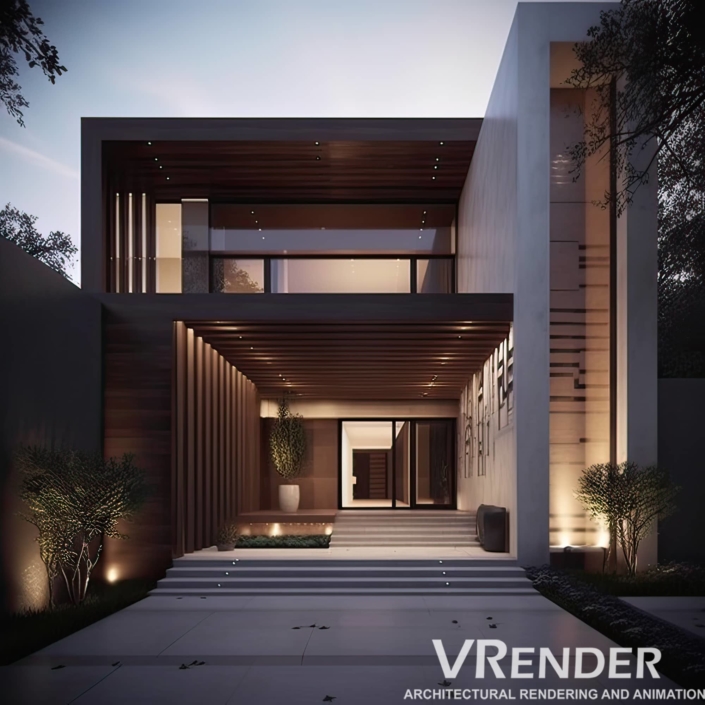Exterior 3D rendering services
Exterior 3D rendering services involve creating realistic and detailed three-dimensional visualizations of the exteriors of buildings, landscapes, or other architectural structures.
These services are commonly used by architects, real estate developers, interior designers, urban planners, property marketers and other industries where a visual representation of the exterior environment is crucial to showcase and visualize their designs before they are actually built.
Here’s an overview of what exterior 3D rendering services typically include:
Conceptual Visualization: Artists and designers work closely with clients to understand their vision and requirements. This may involve sketches, mood boards, or concept drawings to establish the overall look and feel of the exterior design.
Modeling: 3D artists create a digital model of the building or structure, paying close attention to architectural details, proportions, and materials. Modern software tools are used to accurately replicate the design.
Texturing and Materials: Artists apply realistic textures and materials to the 3D model. This includes adding details like brick patterns, wood grains, glass reflections, and metal finishes to make the rendering look as close to reality as possible.
Lighting: Proper lighting is crucial to achieving a realistic and captivating rendering. Artists set up virtual light sources to mimic different times of the day, weather conditions, and artificial lighting effects.
Rendering: This is the process of creating the final 2D image or animation from the 3D model. High-quality rendering engines are used to simulate lighting, shadows, reflections, and other visual effects.
Landscaping: If the exterior rendering involves a landscape or outdoor area, artists may add vegetation, trees, lawns, pathways, and other elements to enhance the overall scene.
Post-Processing: After rendering, post-processing techniques such as color correction, depth of field adjustments, and image enhancements are applied to achieve a polished and professional look.
Client Review and Revisions: Clients are presented with the initial renderings for review. Feedback is collected, and any necessary revisions are made to ensure the final output aligns with the client’s vision.
Final Delivery: Once the client approves the renderings, the final high-resolution images or animations are delivered in the desired formats for use in marketing materials, presentations, websites, and more.
Exterior 3D rendering services are a valuable tool in the architectural and real estate industries. They provide a bridge between conceptual designs and their tangible realizations, enabling a myriad of stakeholders to visualize and engage with projects in unprecedented ways.
lead USA 3d Rendering and Design Company based in New York with more than 17 years of experience in architecture and CGI projects.
Vrender is a Company that offers award-winning commercial services – such as architectural project 3D Rendering and Animation, 3D Modeling, and Virtual Reality for Retail and Real Estate – to a wide variety of U.S. and international clients. We leverage digital, and at the same time, we seek creative and innovative ways to deliver our solutions and create something new in the world of 3D visuals. Primarily we produce photo-realistic images and animations for the Property Development sector.
HI-RES 3D RENDERING
 Check out for High Resolution Renderings
Check out for High Resolution Renderings
What we offer:
- Static Renderings: Standard images of the project from various angles.
- 3D Walkthroughs / Interior and Exterior Animation: Animated video tours of the exterior, often including the surrounding environment.
- Interactive 3D Renderings: Allows the user to navigate around the project in real-time (similar to video game mechanics).
- 3D Tours and 360 3D panorama: Immersive experiences that allow users to ‘walk’ around the project using VR equipment.
- Environment Integration: Modern renders often emphasize how a building integrates with its surrounding environment, considering aspects like shadows, reflections, and local flora.
- Interactive 3D Renderings: Allows the user to navigate around the project in real-time (similar to video game mechanics).
- Augmented Reality Views: Superimposing the 3D model onto a real-world environment using AR devices.
- Real-time Rendering: With advancements in technology, real-time rendering is becoming more prevalent, allowing for faster iterations and interactive experiences.
- Landscape Design and 3D Visualization
- Interior Rendering
- Quality 3D modeling and texturing
- Site Plan Rendering
Our Process of 3D Rendering Innovations
VRender offers creative means of carrying out 3D rendering that is mind-blowing to our clients. Our management is full of creative individuals who are bonded with team spirit to create qualitative renderings to client tastes. However, durability innovation has always been our motive; we do not just construct 3D rendering, but we ensure to do something innovative that maintains its quality outlook for a more extended period. As a result of this, we are continually upgrading as our 3D rendering innovations are always the first of their kind.
3D Rendering stages:
- Client Briefing: Understanding client needs, gathering all necessary data such as architectural plans, materials, textures, and any specific requirements.
- Model Creation: Developing the 3D model based on provided data.
- Texturing and Lighting: Applying materials and ensuring realistic lighting to enhance the model’s appearance.
- Rendering: This is the computational process of converting the 3D model data into the final image or video.
- Post-Processing: Enhancing the render using image and video editing software for added realism or artistic effects.
- Review and Revisions: Addressing client feedback and making necessary adjustments.
Applications:
- Real Estate Marketing: Showcase properties before they’re built. Increase sales by volume level and attract new customers.
- Architectural Approvals: Aid stakeholders in understanding a project’s visual impact.
- Design Refinement: Helps architects and designers identify and resolve potential issues.
- Site Visits: Allows potential investors or buyers to experience the project remotely. Get realistic images and 3D walkthroughs of the upcoming building.
Software Often Used:
- 3D Modeling & Rendering: Autodesk 3ds Max, Cinema 4D, Blender, Rhino, AutoCad, Revit, SketchUp, Vray, Corona Renderer.
- Post-processing: Adobe Photoshop, Adobe After Effects.
- VR/AR: Unity3D, Unreal Engine.
Our Belief about 3D Architectural Visualization
We understand that your construction can be worth a lot if given an attractive look. As we promise, we have professional designers who are highly knowledgeable in architectural design that provides beauty to the environment. Our 3D Architectural Service will not only give you a 21st-century architectural design, but we will also provide a detailed walkthrough of both interior and exterior spaces rendered to your taste.
Our team of 3D Artists and Architects:
- Highly knowledgeable in 3D software, virtual reality, 3D modeling and texturing, rendering, lighting, 3D animation, and digital image post-production.
- Innovative-minded and quick to adapt to new solutions and work under pressure to meet every challenging and mission-critical deadline.
- Professional skill in presentation of high-end residential visuals, and commercial architectural design in a simple and clearer term.
- Ability to create any design and make it the unique space every designer is looking for.
- According to the client brief, we produce detailed, high-quality computer-generated 3D illustrations such as images, marketing materials, presentations, and 3D models for contracted projects.
Popular Questions about 3D Renderings by our clients
I contacted your team for 3D Renderings. What is the process to get started?
To start a project, please send your CAD “DWG” files with drawings, plans, blueprints, 3D models or sketches (PDF, DWG, (CAD), JPEG, PNG or another file format, showing all elevations, interior design ideas, floor plans, site plans, and roof plans.
Please specify and send the images of your preferred building finish materials colours, design example, furniture, textures, landscape and surroundings photos, Google Maps coordinates.
The process is simple and straight forward:
- You provide drawings and finish specs.
- We provide you a quote.
- You will return the signed proposal along with your retainer upon approval.
- We generate geometry and preliminary renderings for your review and comments. Our quote includes up to two revisions.
- The final payment is made after completion.
How many numbers of revisions do I get for my virtual image?
Our quotes cover 2 rounds of free revisions.
How long does it takes to complete 3D Rendering?
Our standard lead time 5-7 business days, but we provide low res preliminaries for review and comments sooner.
What is the cost of your 3D Rendering service?
The cost of 3D Architectural Rendering and Animation Services in most cases varies widely based on numerous parameters (design complexity, number of views etc.) and calculated individually in each case.. Bulk order discount is possible. Please note there is a discount to render the same geometry from different angles.
Can I get a discount?
Get 25% OFF first order!
Why do you need Architectural Rendering?
Architecture is one of the most advanced places in shaping visual culture. The impact of improved or simply beautiful architecture on a person is more than serious – it creates not only aesthetic looks but also provides a good or depressing relevant experience. Besides the basic architecture is a portrait of the city determines, by its advantages or disadvantages, and it shows historical components.
In the current context of the architecture of any nature, it has become closer, and now there are not only in one mind and can be demonstrated large numbers of people. And the question here is not only the backbone of future construction or builder nuances of the situation in the landscape but also the inside of the house, a large shopping center, or a stadium. The scale does not limit to if the object of architectural visualization is the city.
Architectural Visualization is a graphic demonstration of a future construction using architectural design. It allows you to maximize the full version and see the details if you want to fix them. Usually includes not only the appearance of an order but the purely technical details. In particular, the qualitative composition, staging lights, and showcasing the elements of architecture and materials.
In architectural visualization, we use two methods to represent graphics images. For implementation, we either use our hands or use computing methods. When images are created by hand, we use the principles of descriptive geometry and in the case of computer graphics, we use an appropriate professional program.
We make use of different software programs that provides completely different professional solutions such as Blender, Archicad, AutoCAD, 3ds Max, Vray, SketchUp, etc.
What is Exterior 3D Rendering?
3D exterior rendering is usually created at the first stages of the developmental process of a project. It helps to simplify the interaction between the author, the owner of the project and their partners, investors or customers.
3D exterior visualization of a building will show you all the future construction benefits and drawbacks, estimates of all architectural advantages and correspondence with the surrounding redevelopment areas.
You can also show your investors or prospects a graphical model of your project instead of complicated drafts for observation. This will help your prospects to quickly reach a decision on buying or investments. This makes architectural visualization an effective marketing apparatus.
What is Interior 3D Rendering?
Recently, 3D rendering appears to be the standard during the development process of interior design projects. Architectural visualization of interior designs is very useful in private house construction projects and buildings intended for public use.
Additional Articles / FAQ:
What do you need to know about 3D-visualization?
3D visualization refers to the process of creating graphical content in a three-dimensional space, using various computational techniques and software tools. It allows you to present data, concepts, and complex models in an interactive, easily understandable format. This is widely used in a range of fields such as architecture, engineering, medical imaging, video games, and film production. Read more What do you need to know about 3D visualization?
3D Rendering Engines
3D rendering engines are software libraries or frameworks designed to generate high-quality images, animations, or even real-time interactive scenes from 3D models. They are commonly used in video games, simulations, architectural visualization, and in any context where real-time 3D graphics are necessary. Read more about 3D Rendering Engines
What is 3D graphics?
3D graphics refer to the creation, manipulation, and representation of objects in three-dimensional space within the realm of computer graphics. Unlike 2D graphics, which are flat and lack depth, 3D graphics have a sense of depth, volume, and spatial arrangement. This technology is used in a variety of fields, including video games, animation, scientific modeling, engineering, architecture, and virtual reality, among others. Read more about What is 3D graphics?
What is V-Ray?
V-Ray is a 3D rendering software that is used for generating photorealistic images and animations. Developed by Chaos Group, V-Ray is commonly used as a plug-in with other software such as Autodesk 3ds Max, Autodesk Maya, SketchUp, Rhino, and Revit, among others. It is particularly popular in industries like architecture, visual effects (VFX) for film, interior design, and product design. Learn more What is V-Ray?
What is the render farm?
A render farm is a high-performance computer system, or cluster of computers, used to render computer-generated imagery (CGI), typically for film and television visual effects or animation. This system is designed to distribute the rendering workload across multiple computers to speed up the process and allow for the completion of much larger projects than could be achieved on a single computer. What is the render farm?
3D Rendering and 3D Modelling Software
3D Modeling Software:
3D modeling software allows you to create, edit, and manipulate a 3D object within a digital environment. This object can then be used in various applications including games, films, architectural designs, and virtual simulations.
3D Rendering Software:
3D rendering is the process of converting 3D models into 2D images or videos with photographic quality. Some 3D modeling software also comes with built-in rendering engines, while there are standalone rendering software as well. Read more 3D Rendering and 3D Modelling Software
Best Rendering Engines for 3D Visualization
Rendering engines play a pivotal role in 3D visualization, turning raw 3D models into beautiful visuals or animations. The choice of a rendering engine often depends on the specific needs of a project, the software being used, and the hardware available.
Definition of 3d Rendering
The term “rendering” has multiple meanings depending on the context in which it is used, but in the field of computer graphics, rendering refers to the process of generating a two-dimensional image or animation from a three-dimensional model or scene. This process involves using algorithms to simulate the interactions of light with the objects in the model to create a realistic or stylized visual output.
In essence, rendering translates a high-level description of a 3D scene, including geometric shapes, textures, lighting conditions, and camera perspective, into a final 2D image or series of images (in the case of animations). The computer performs complex calculations to determine the appearance of each pixel in the output image based on the properties of the objects, materials, and light sources in the scene. Read more Definition of 3D Rendering
What is Architectural Visualization?
Architectural visualization is the practice of creating digital representations of architectural designs, structures, or spaces. This is often done using computer graphics, specifically 3D modeling and rendering techniques, to produce photorealistic or stylized visuals of a building or environment that has yet to be built. Architectural visualization serves multiple purposes:
What is Rendering?
3D rendering is the process of generating a two-dimensional image or animation from a three-dimensional model using computer graphics. In simpler terms, it’s like taking a photograph of a 3D scene except that the scene is virtual and generated by a computer. This process is commonly used in a variety of fields such as video games, movies, architectural visualization, industrial design, and virtual reality. Read more What is Rendering?
Types of 3D Rendering
Architectural 3D rendering is a specialized subset of 3D rendering that focuses on the visualization of architectural designs. These renderings allow architects, designers, and clients to see what a finished project will look like before construction begins. There are different types of architectural 3D renderings based on what they depict and how they are used
Visualization Services for Architects
How to Order Architectural 3D Rendering Services
3D Rendering Image resolution
How Much Does 3d Rendering Cost? Pricing of Architectural Visualization
Process of 3D Visualization
The use of 3D Visualization Service
Real-time 3D Architectural Visualization
3D Visualization, Render and Rendering – what are these?
Technology of 3D Visualization

